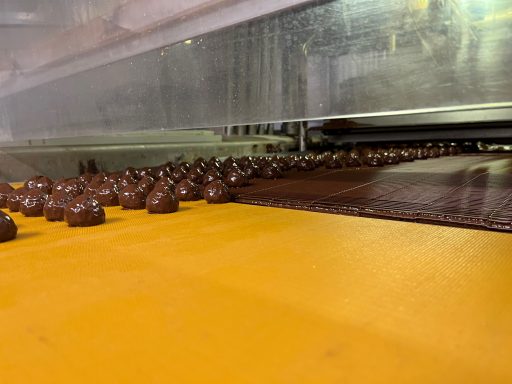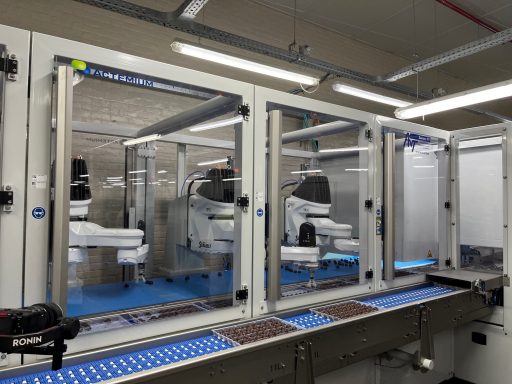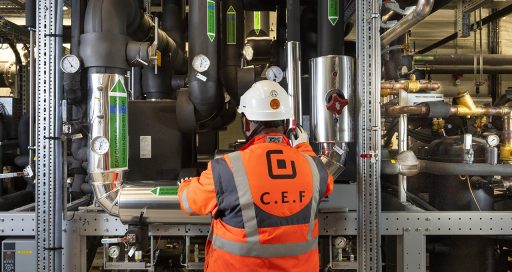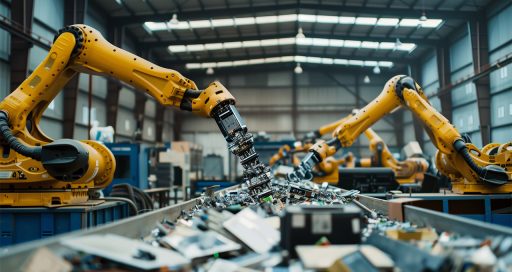Set up in 1921, chocolate craft business Manufacture Belge de Chocolats has appointed Actemium and AVT Europe to automate one of its production lines. The aim is to combine innovation, industrial performance and traditional craftsmanship.

The chocolate is first extruded before being enrobed and cooled. During the production process, the chocolate undergoes various quality controls through machines and continuous physical permanence on site to guarantee the final product.
The craft industry is naturally associated with age-old traditions and manual manufacturing methods. And although the conventional manufacturing sector is more attached to technical innovation and cutting-edge technology, the interdisciplinary and decompartmentalised nature of business lines and skills today make it a valuable partner for the craft sector. So craft trades can now have the best of both worlds. Manufacture Belge de Chocolats, a high-end chocolate praline producer based in Brussels (Belgium), is a case in point. Building on a century of experience and know-how, the chocolatier is beginning a new chapter in its history by successfully adopting automation and robotics to boost and optimise production.
Comprehensive support
Manufacture Belge de Chocolats had been working with Actemium on its packaging and production lines for several years when the need arose to optimise output. VINCI Energies already has significant expertise and know-how in the food sector, especially the high-end segment.
“Process automation must be fully aligned with our client’s know-how and requirements”
It was therefore logical that the chocolatier commissioned the company to automate one of its production lines in cooperation with AVT Europe, another VINCI Energies business unit, for the mechanical aspects. Together, they provided 360-degree project management and comprehensive support, ranging from business care to the integration of machines on site.
“The chocolate is first extruded before being enrobed and cooled. A conveyor system equipped with inspection and detection cameras then delivers the products to four Scara picking robots from Stäubli, which distribute the chocolates on trays. These are then routed to an operator who carries out a last quality control and places the trays in a box,” explains Pieter D’Hamer, senior project engineer at Actemium. As many as 360 chocolates are now processed each minute.

Robot operation. Handles up to 360 chocolates per minute.
Flexibility and quality control
However, the aim of the automation project is not to increase chocolate output. Chocolate is a living thing, and cooling time cannot be compressed as it is important to preserve its flavour and taste.
What Actemium and AVT Europe did was to improve the process by eliminating the manual handling of the product and freeing up time for quality control, and to deliver greater flexibility which should result in a return on investment within three years.
Physically demanding work is now performed by machines, allowing operators to focus on higher-value-added jobs. The process does not compromise in any way the exceptional workmanship unique to craft trades or the regulatory requirements set by the sector, says Pieter D’Hamer: “Process automation must be fully aligned with our client’s know-how and requirements, especially in the cutting-edge food sector.”
Craft and manufacturing, false enemies
An essay published in 2006 asks: “Does the craft sector represent the future of the industrial system?” The two sectors have never been closed off to one other; quite the reverse. Technical progress in manufacturing has influenced the craft sector by changing operating procedures used in workshops and introducing new types of production that could boost productivity. Industry, in turn, has been inspired by craft techniques, for example in terms of accuracy, bespoke approach, and one-off or short-run production. Over the last ten years or so the emergence of FabLabs has supported the convergence of the two worlds, helping to widen access to shared practices and disseminate a joint culture.
16/11/2023
Learn more:
Watch the video





